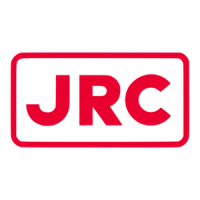6-5 Section 6 Target Tracking and AIS
1
2
3
4
5
6
7
8
9
10
11
12
13
14
15
16
17
18
19
20
21
22
23
24
25
26
27
6.2.4 Relative Vector and True Vector
From two points of view, collision prediction and avoidance, it is necessary to obtain the relative vector
of other ship for prediction and the true vector of other ship for collision avoidance in order to realize
other ship's aspect.
The relationship between the relative vector and true vector is shown in the following figure.
Furthermore, the meanings of both vectors are explained.
Both rough CPA and TCPA can be obtained easily from the relative speed vector of other ship. This
method has an advantage that the risks of collision with all other ships within the radar range can be
seen at a glance. On the other hand, the course and speed of other ship can easily be obtained from its
true speed vector, enabling other ship's aspect to be seen at a glance. Thus, the aspects of other ships
(transverse, outsail, parallel run, reverse run, etc.) as described in the act of prevention of collision at
sea can be readily understood. If there is a risk of collision with other ship, the operator can determine
which rule to be applied and how to operate own ship.
6.2.5 Radar and Collision Avoidance
Radar is still playing an important role for collision prevention and positioning.
A plotter is used to further enhance the radar functionality. The plotter is capable of plotting other
positions of other ships in 3 to 6 minute intervals to monitor their movement. The plots of other ships
represent their tracks relative to own ship, and it is shown whether there is a risk of collision, namely
CPA and TCPA can be obtained. This method using a plotter is fairly effective, but the number of target
ship, which is manually plotted, is limited and it takes several minutes to measure those.

